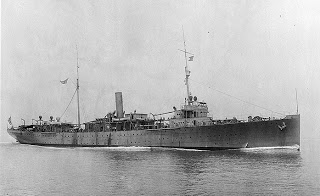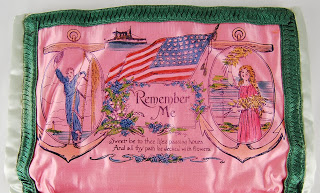 |
| UC-44 Deck Gun Cartridge Case |
During the First World War, the German Imperial Navy employed the now famous u-boats to assault allied merchant shipping. UC-boats were a class specifically designed as coastal minelayers to disrupt traffic in Allied harbors. In 1917, British intelligence agents transmitted a false report that the area off Waterford, Ireland had been swept for mines. As expected, the Germans intercepted the message and ordered another minelayer to the harbor to deploy new mines. The plan worked though not as intended. SM UC-44, the u-boat ordered to Waterford, was sunk on 5 August 1917 when one of its own recently dropped mines exploded. The explosion killed all on board except the ships commander Kapitanleutnant Kurt Tebbenjohanns.
The following month, the Royal Navy raised the wreck to gather intelligence. In addition to recovering documents and equipment, divers recovered the bodies of nineteen crew members.
Besides mines and torpedoes, UC-44 carried an 88mm deck gun. After the initial salvage, divers from an American destroyer tender, USS Melville (AD-2) also recovered items from the remaining wreckage including several mines and this cartridge case used to carry ammunition for the deck gun. The case is made of copper and possibly lead, two non-ferrous metals which are resistant to sparks that could ignite black powder.
 |
| USS Melville (AD-2) in 1915 |
Gift of Mrs. Dallas Wait 85.17.09
Image of USS Melville courtesy of the Naval History & Heritage Command






